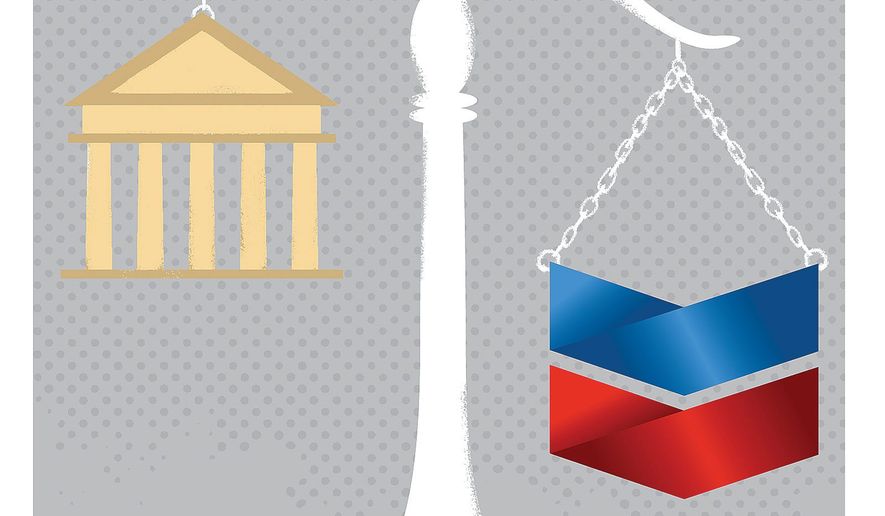Legal Implications

The Chevron ruling established the doctrine of judicial deference to agency interpretations of statutes. This doctrine has had a significant impact on administrative law, shaping the balance of power between the judiciary and administrative agencies.
Chevron ruling, established by the Supreme Court in 1984, gives considerable deference to federal agencies’ interpretations of ambiguous statutes. For instance, in the chevron decision supreme court , the Court held that the Environmental Protection Agency’s interpretation of the Clean Air Act was entitled to deference.
This doctrine has been criticized for giving too much power to agencies, but it remains a significant part of administrative law.
Under the Chevron doctrine, courts must defer to an agency’s interpretation of a statute if that interpretation is reasonable. This deference is based on the principle that agencies have expertise in the areas they regulate and are therefore better equipped than courts to interpret the statutes that govern their activities.
The Chevron ruling, a landmark Supreme Court decision, established the doctrine of deference to agency interpretations of ambiguous statutes. However, in certain circumstances, this deference can be overturned. For a deeper understanding of the implications of such a reversal, refer to the comprehensive guide on chevron overturned meaning.
Returning to the Chevron ruling, it clarified that courts should defer to agency interpretations that are reasonable and consistent with the statute’s purpose.
Chevron Doctrine in Practice
The Chevron doctrine has been applied in numerous cases, including:
- Chevron U.S.A., Inc. v. Natural Resources Defense Council, Inc. (1984): In this case, the Supreme Court held that the Environmental Protection Agency’s (EPA) interpretation of the Clean Air Act was reasonable and therefore entitled to deference.
- Auer v. Robbins (1997): In this case, the Supreme Court held that the Department of Labor’s (DOL) interpretation of the Fair Labor Standards Act was reasonable and therefore entitled to deference.
The Chevron doctrine has also been criticized by some scholars, who argue that it gives too much power to administrative agencies and that it can lead to arbitrary or capricious decisions.
Limitations and Criticisms, Chevron ruling
The Chevron doctrine is not without its limitations and criticisms. Some critics argue that the doctrine gives too much deference to agencies, allowing them to avoid judicial review of their actions. Others argue that the doctrine is too rigid and that it prevents courts from correcting agency interpretations that are clearly wrong.
Despite these criticisms, the Chevron doctrine remains an important part of administrative law. It provides a framework for courts to review agency interpretations of statutes and helps to ensure that agencies are held accountable for their actions.
Industry Impact: Chevron Ruling
The Chevron ruling has significant implications for the oil and gas industry, particularly Chevron Corporation. The ruling sets a precedent for holding companies liable for environmental damage caused by their operations, even if the damage occurs in foreign countries.
Chevron has faced numerous legal challenges in the wake of the ruling. In 2019, an Ecuadorian court ordered Chevron to pay $9.5 billion in damages for environmental contamination caused by its operations in the Amazon rainforest. Chevron has appealed the ruling, but the case is still ongoing.
Broader Implications for Regulated Industries
The Chevron ruling has broader implications for companies operating in regulated industries. The ruling demonstrates that companies can be held liable for environmental damage, even if they are not directly responsible for the damage.
This has implications for companies in a variety of industries, including mining, manufacturing, and energy. Companies in these industries need to be aware of the potential legal risks associated with their operations and take steps to mitigate these risks.
Environmental Implications

The Chevron ruling has had a significant impact on environmental regulations and policies in the United States. The ruling established a doctrine of judicial deference to agency interpretations of ambiguous statutes, which has made it more difficult for environmental groups to challenge agency decisions in court.
One of the most important cases in which the Chevron ruling has been cited is Massachusetts v. EPA, in which the Supreme Court held that the EPA had the authority to regulate greenhouse gases under the Clean Air Act. The Court cited the Chevron doctrine in its decision, noting that the EPA’s interpretation of the statute was reasonable and entitled to deference.
The Chevron ruling has also been cited in cases involving the Endangered Species Act, the Clean Water Act, and the National Environmental Policy Act. In each of these cases, the courts have deferred to the agency’s interpretation of the statute, even when the agency’s interpretation has been challenged by environmental groups.
Potential Implications
The Chevron ruling has the potential to have a significant impact on future environmental litigation. The ruling makes it more difficult for environmental groups to challenge agency decisions in court, which could lead to less environmental protection.
The Chevron ruling also raises questions about the role of judicial deference in environmental decision-making. The ruling suggests that courts should defer to agency interpretations of statutes, even when the agency’s interpretation is not the most reasonable one. This could lead to less accountability for agencies and less protection for the environment.
The Chevron ruling, established in 1984, granted deference to federal agencies’ interpretations of ambiguous statutes. However, the recent supreme court overrules chevron doctrine , a significant shift, limits this deference. The Chevron ruling had been criticized for allowing agencies to overstep their authority, and its overruling is expected to restore balance between the branches of government.
Chevron ruling, a method of weaving patterns into fabric, finds its roots in the vibrant world of tartans, where intersecting lines create bold and distinctive designs ( tartan meaning ). These patterns, often associated with Scottish clans, have inspired the use of chevrons in various textile applications, from traditional garments to contemporary fashion.
The chevron ruling technique, with its ability to create dynamic visual effects, continues to captivate designers and add a touch of timeless elegance to fabrics.
The Chevron ruling, which gave courts great deference to federal agencies’ interpretations of their own regulations, has been overturned by the Supreme Court. This decision marks a significant shift in the balance of power between the courts and agencies, and it could have a major impact on the regulation of businesses and industries.
Supreme court overrules chevron doctrine It remains to be seen how the courts will apply the new standard, but it is clear that the Chevron ruling is no longer the law of the land.
